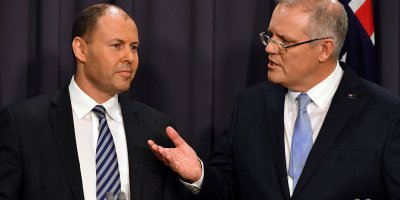
The government in Australia is making an effort to go digital this year. Source: Shutterstock
Australia taking concrete steps to digitize itself this year
AUSTRALIA isn’t an exciting place to be when it comes to technology.
The country is at par with developed countries such as the US and the UK in many ways and has the financial resources needed for digitization — but it still struggles to adopt new technologies.
Fortunately, the government is aware of its weaknesses when it comes to a national digital transformation strategy. In the recent federal budget, the country made significant allocations to help accelerate its journey to digital.
The Australian Information Industry Association (AIIA) thoroughly reviewed the budget to piece together the various projects and found a number of new programs and allocations directed toward’s the country’s goal to digitize itself this year.
According to the AIIA’s review document, the government’s digital transformation strategy outlines more than 100 key projects and milestones and is backed by over AU$1 billion (US$700 million) of investment, being delivered by over 20 agencies over the next 24 months.
During its assessment of the federal budget, the buggest digital projects seemed to be in the areas of employment, healthcare, and overhauling the country’s payments infrastructure.
In terms of employment, the federal budget has allocated AU$249.8 million (US$175 million) over five years to the Department of Human Services (DHS) and the Department of Jobs and Small Business (DJSB) to pilot a new employment service model starting in July 2019.
The initiative will involve around 95,000 jobseekers who will test “digital employment servicing”.
Next, the AIIA highlights the investment of an additional AU$200 million (US$141 million) this year in the Australian Digital Health Agency to ensure continued progress of the MyHealth Record System.
The digital recording keeping system for medical history was started in 2017 and aims to help individuals track and share their medical history.
To be honest, the federal budget emphasizes on healthcare and healthcare data quite extensively. According to AIIA’s review, there are several allocations that focus on digitizing this sector in the coming months:
- The Health and Medical Research Future Fund, for example, with an investment of AU$1.4 billion (US$1 billion) is a core commitment of the government’s future strategy
- A further AU$80 million (US$56 million) has been earmarked for new Department of Health (DOH) Data Infrastructure to provide registries, biobanks, and linkage platforms
- On a more immediate and important focus, the DOH has been promised AU$38.4 million (US$27 million) over five years to strengthen Aged Care risk-based compliance in the country.
Finally, the Australian government hopes to catch up with cashless technology in neighboring countries such as Singapore, Hong Kong, and others in the APAC.
In the federal budget, the country has provided for AU$128.8 million (US$90 million) in provisions to help extend the Cashless Debit Card (CDC) trial to June 2021, including expansion and enhancements of supporting technology.
The expenditure will be shared across the DHS, the Department of Social Security (DSS), and the Administrative Appeals Tribunal (AAT).
Cybersecurity is a key area of focus
Webber Insurance provides a comprehensive list of prominent cyberattacks in Australia — and in just the first four months in 2019, that list has grown several pages.
From the cyberattack on Australian Parliament in February to the incident at Melbourne’s Cabrini Hospital where a cyber crime syndicate accessed the medical files of 15,000 patients, the country is at significant risk when it comes to data and digital networks.
Natually, it is the focus of the government to prevent such hacks.
According to AIIA’s review, the Australian federal budget provides an unpublished allocation across “various agencies” for Cyber Uplift – to enhance whole-of-government cyber security arrangement including support for the 2019 elections.
In fact, starting last year, AU$70 million (US$50 million) will be provided for two years across several agencies to undertake preparatory work required by the ATO to migrate to an alternative data centre provider.
AIIA says digitizing government needs more effort
While the AIIA’s review included several points that seem complimentary of the federal budget, the body does offer five recommendations to help the government accelerate its journey to digital.
In its Government Digitization Policy Position Statement, the AIIA calls for the following:
- Closer collaboration between the Government, industry and research institutes to accelerate government digitisation
- Capability development of the APS in the design and delivery of government digital services
- Improvements and efficiencies in digital sourcing
- Ensuring data collection through government transactions are secure, private, accurate and afford required consumer protection
- Continued focus on inclusivity and accessibility of all services and digital communications to ensure that no one is left behind.
Effectively, the AIIA’s recommendations simply ensure that the government and its agencies use their budgetary allocations in the best way possible.
Given the push at the federal level, it seems as though the country is preparing to catapult its digital infrastructure and businesses to a new digital-high and a new level of competitiveness in the global ecosystem and marketplace.
READ MORE
- Ethical AI: The renewed importance of safeguarding data and customer privacy in Generative AI applications
- How Japan balances AI-driven opportunities with cybersecurity needs
- Deploying SASE: Benchmarking your approach
- Insurance everywhere all at once: the digital transformation of the APAC insurance industry
- Google parent Alphabet eyes HubSpot: A potential acquisition shaping the future of CRM










